In the pantheon of comedy legends, few shine as brightly as Mel Brooks, whose brilliant characters continue to make us laugh decades after they first graced our screens. From Western parodies to space adventures, Brooks created a universe of unforgettable personalities who skewered stereotypes while delivering belly laughs that transcend generations. His unique brand of satire—sharp yet surprisingly warm-hearted—has given us characters who feel as fresh and funny today as they did when they first appeared. Let’s take a delightful trip through Brooks’s wildest creations and explore why they continue to hold a special place in comedy history.
1. Governor William J. Le Petomane (Blazing Saddles, 1974)
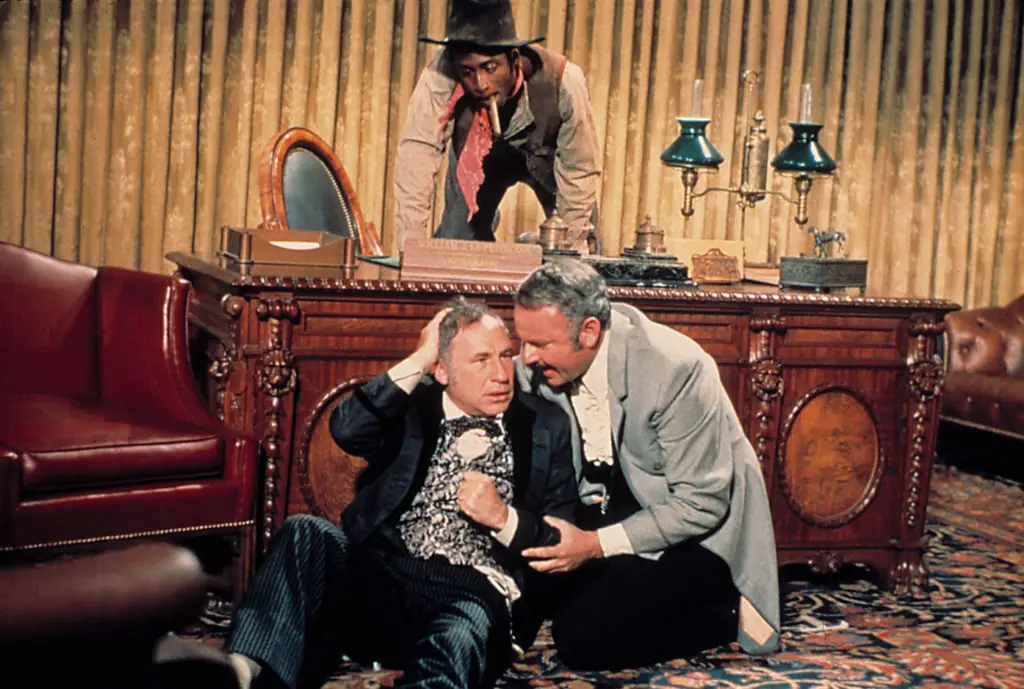
As the incompetent, corrupt Governor William J. Le Petomane in “Blazing Saddles,” Brooks created a perfect satire of political buffoonery that feels remarkably relevant in any era. The character’s name itself (referencing a famous French flatulist) signals Brooks’s willingness to combine highbrow historical references with lowbrow humor. His memorable line “Work, work, work, work, work, work, work” while playing with toys in his office perfectly captures the disconnect between political power and actual governance. Check out how this film ranks in a GoldDerby compilation rating Mel’s top films.
What makes Le Petomane timeless is how he embodies the timeless truth that many authority figures are simply children in adult clothing, using their power for self-indulgence rather than public service. The character’s complete disinterest in actual governing except when it benefits him personally feels eerily familiar regardless of which decade you’re watching from. Brooks’s performance as the governor—with his exaggerated self-importance and childish petulance—created a template for political satire that comedians continue to draw from today.
2. Yogurt (Spaceballs, 1987)

Brooks’s parody of Yoda in “Spaceballs” transformed the wise Jedi Master into Yogurt, a merchandising-obsessed sage who famously explained: “Moichandising! Moichandising! Where the real money from the movie is made!” The brilliant meta-commentary not only lampooned Star Wars but also prophetically critiqued Hollywood’s growing obsession with franchise marketing. Brooks’s performance, complete with gold makeup and exaggerated mannerisms, created a character both ridiculous and strangely endearing. The American Society of Cinematographers explores the satirical effects of this peculiar yet memorable film.
What makes Yogurt perpetually relevant is how he exposed the commercial underbelly of beloved franchises decades before it became common knowledge among moviegoers. As merchandise has become increasingly central to film studio profits, Yogurt’s obsession with “Spaceballs: The Flamethrower” and other branded products seems less like parody and more like documentary. The character stands as evidence of Brooks’s remarkable ability to identify cultural trends worthy of mockery long before others recognized them.
3. 2000 Year Old Man (with Carl Reiner, 1960s-1990s)
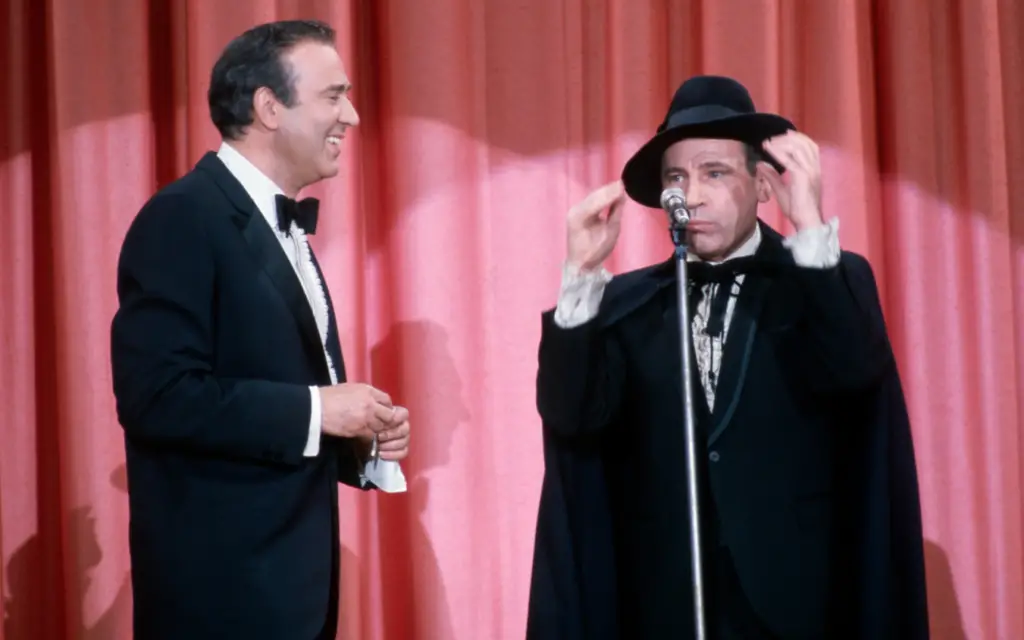
Perhaps Brooks’s most enduring character creation, the 2000 Year Old Man emerged from improvisational comedy sessions with Carl Reiner and evolved into a cultural phenomenon spanning albums, television, and books. Speaking in a distinctive Yiddish-inflected accent, this ancient witness to history offered hilariously mundane takes on everything from the discovery of fire (“A guy named Phil, a very nervous guy”) to meeting Jesus (“Thin lad, wore sandals, long hair, walked around with 12 other guys”). The character’s perspective—simultaneously world-weary and petty—created comedy gold that continues to influence improvisational comedy. The Guardian revealed Mel’s heartbreaking pain upon losing Reiner, remembering him not just as a talented colleague but an even greater person.
What keeps the 2000 Year Old Man feeling fresh is how Brooks used the character to combine ancient history with contemporary concerns, creating a timeless blend of the epic and the everyday. His ability to translate grand historical moments into relatable human experiences (complaining about taxes in ancient Rome or describing Joan of Arc as “a little cuckoo”) helps audiences connect with history in unexpected ways. The improvised nature of these routines also showcases Brooks’s quick wit and creativity, qualities that never go out of style in comedy.
4. Dr. Frederick Frankenstein (Young Frankenstein, 1974)

Brooks’s turn as Dr. Frederick Frankenstein (pronounced “Fronk-en-steen”) in “Young Frankenstein” gave us a brilliant character struggling against his infamous family legacy while inevitably succumbing to the same mad scientific impulses. His gradual transformation from respectable medical lecturer to wild-haired mad scientist creates a perfect character arc that both honors and parodies the classic Universal monster films. The doctor’s insistence on distancing himself from his grandfather’s reputation, only to enthusiastically shout “IT’S ALIVE!” when his experiment succeeds, remains one of cinema’s most satisfying comic payoffs.
What makes Dr. Frankenstein timelessly appealing is how he embodies the universal struggle between our public facades and our genuine passions. Brooks plays the character with a wonderful combination of intellectual snobbery and barely contained manic energy. The doctor’s journey reminds us that we often become exactly what we claim to reject—a psychological insight wrapped in the guise of monster movie parody. His perfectly timed descent into madness, punctuated by the iconic “Puttin’ on the Ritz” scene with his monster, demonstrates Brooks’s gift for finding the hilarious sweet spot between dignity and absurdity.
5. Comicus (History of the World, Part I, 1981)
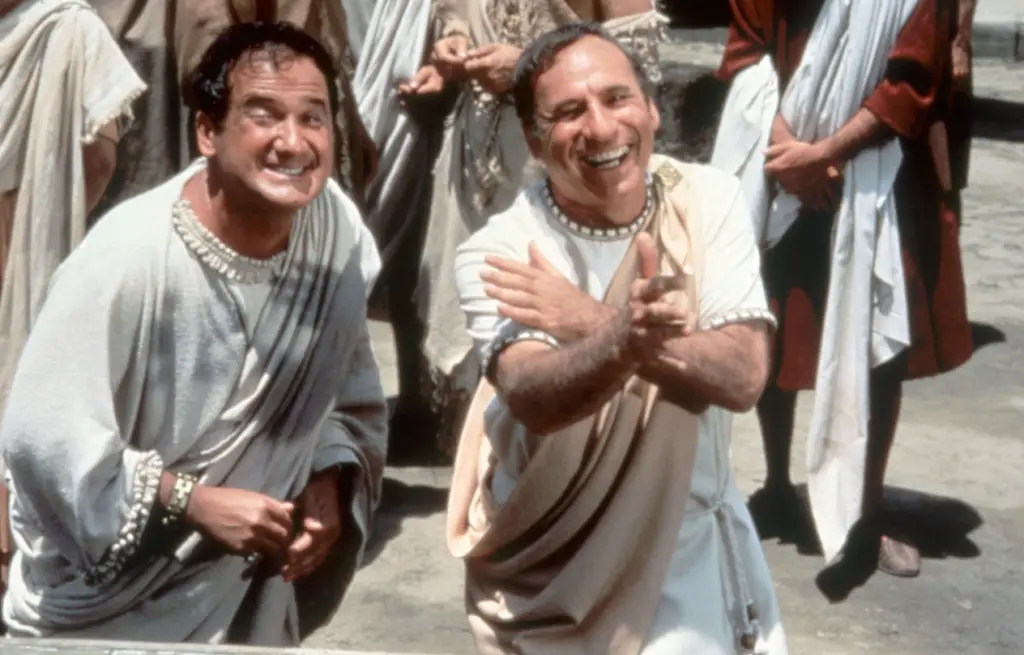
As the “stand-up philosopher” Comicus in ancient Rome, Brooks created a character who demonstrated how comedy has always existed as a form of speaking truth to power—even when that truth-telling comes with significant risks. Comicus’s performance at Caesar’s palace (the actual palace, not the casino) shows how comedians throughout history have walked the dangerous line between entertainment and criticism. His failed attempt to soften a joke about the emperor (“Don’t get sore, just because you’re unemployed”) perfectly captures the comedian’s eternal dilemma when performing for powerful audiences.
The genius of Comicus lies in how Brooks used the character to connect ancient history to contemporary comedy, suggesting that stand-up comics are part of a tradition dating back thousands of years. His struggles with Roman censorship and political sensitivity feel remarkably modern in an era when comedians still debate the boundaries of acceptable humor. Brooks also used Comicus to pay homage to classic vaudeville and Borscht Belt humor, preserving these traditions by transplanting them into historical settings where they feel simultaneously out of place and perfectly at home.
6. Rabbi Tuckman (Robin Hood: Men in Tights, 1993)
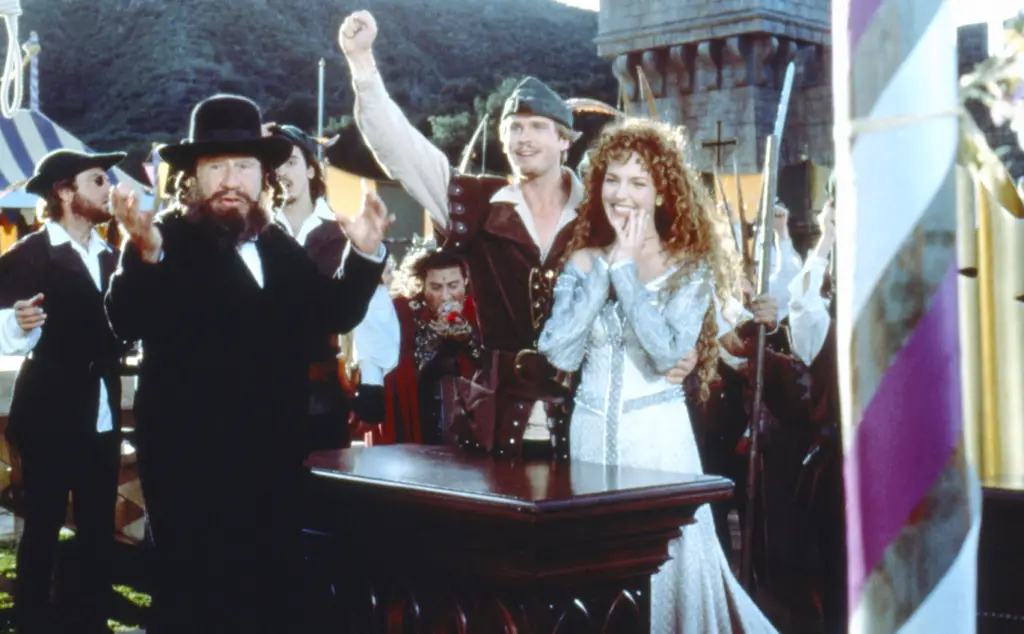
Brooks’s portrayal of Rabbi Tuckman—a mohel who performs circumcisions while wandering through Sherwood Forest—reimagined the traditional Friar Tuck character through a distinctly Jewish lens. Armed with his “royal toolbox” and offering “drinks all around” (from his hip flask), Rabbi Tuckman brought Brooks’s characteristic Jewish humor into the medieval world of Robin Hood. His explanation of his profession (“I do circumcisions…Just a little off the top!”) delivered with cheerful enthusiasm, ranks among Brooks’s most quotable moments.
What makes Rabbi Tuckman continue to resonate is how the character playfully inserts Jewish culture into spaces where it was historically excluded, creating a hilarious form of revisionist history. Brooks has always excelled at finding humor in the Jewish experience, and Rabbi Tuckman represents this aspect of his comedy at its most accessible and universally appealing. The character also demonstrates Brooks’s talent for creating supporting roles that steal every scene they’re in, delivering maximum comic impact with minimal screen time. The Rabbi’s brief appearance leaves viewers wanting more—a testament to Brooks’s economical character development.
7. President Skroob (Spaceballs, 1987)

As the incompetent, air-hoarding President Skroob in “Spaceballs,” Brooks created another memorable parody of political leadership, this time transported to a science fiction setting. The character’s name—Brooks spelled backward with a slight alteration—signaled the personal connection the filmmaker felt to this villain who combines pomposity with pettiness. President Skroob’s most revealing moment comes when he struggles with an upside-down phone, shouting “I can’t breathe!” while surrounded by canned air—a brilliant visual representation of privilege disconnected from the suffering it causes.
What gives President Skroob lasting relevance is how he embodies timeless themes of political corruption and environmental exploitation. His willingness to steal an entire planet’s air while assuring citizens “there’s nothing to worry about” feels disturbingly familiar in our era of climate change debates and resource depletion. Brooks plays Skroob with a perfect combination of menace and incompetence that continues to resonate whenever we encounter leaders who combine authority with stunning cluelessness. The character stands as proof that science fiction comedy can deliver sharp social commentary alongside its laughs.
8. Bialystock (The Producers, 1967/2005)
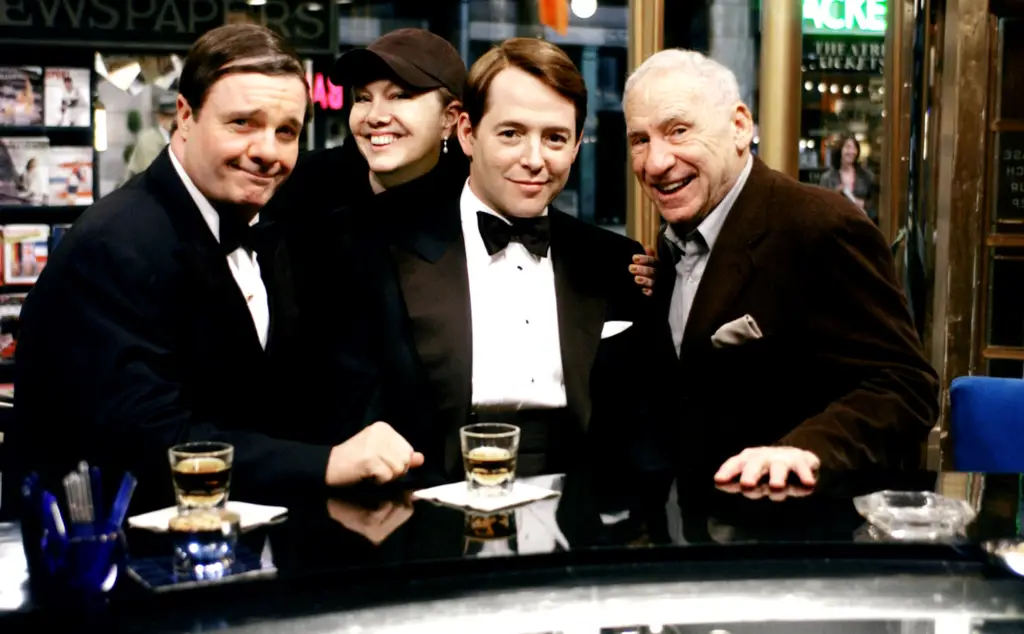
Though Zero Mostel originated the role onscreen and Nathan Lane played it in the musical adaptation, Brooks wrote and shaped the character of Max Bialystock, the failed Broadway producer willing to sell romantic encounters with elderly women to finance his shows. The scheme to produce a guaranteed flop (“Springtime for Hitler”) and run off with the investors’ money creates the framework for one of comedy’s most perfect plots. Bialystock’s desperate hustle and outsized personality have influenced countless fictional showbiz characters who followed.
What makes Bialystock eternally compelling is how he represents both the sleazy and idealistic aspects of show business—willing to do anything for a buck while still believing in the transformative power of theater. His partnership with the neurotic accountant Leo Bloom creates a comedy duo for the ages, playing off classic opposites in personality while united in their scheme. Brooks’s creation of Bialystock demonstrates his deep understanding of show business desperation and the American hustler archetype. The character continues to work because audiences recognize the universal truth that sometimes the greatest ambitions emerge from the greediest motives.
9. Bert (High Anxiety, 1977)
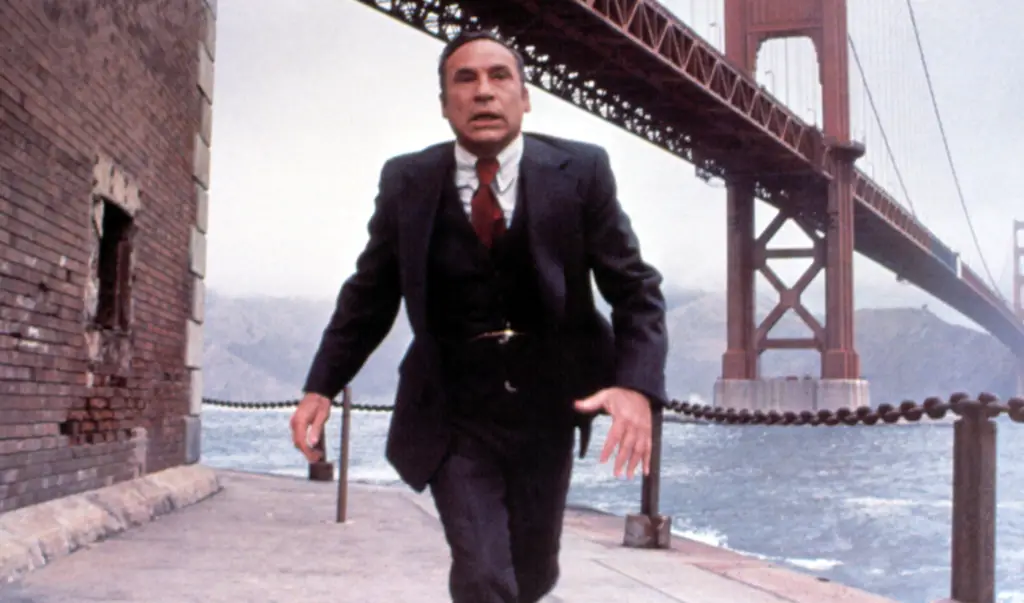
In Brooks’s Hitchcock parody “High Anxiety,” he plays Dr. Richard Thorndyke, but one of his most memorable moments comes when he briefly portrays a deranged bellhop named Bert who literally carries Thorndyke’s character across a hotel lobby while refusing to put him down. This brief transformation showcases Brooks’s physical comedy talents and his willingness to commit fully to even the most absurd situations. Bert’s stubborn insistence that “I got you! I got you!” while manhandling Thorndyke creates comedy through sheer commitment to a ridiculous premise.
What makes Bert memorable despite limited screen time is how the character represents Brooks’s talent for creating comic moments that work through pure commitment rather than clever dialogue or plot. The scene works because Brooks fully embodies both the increasingly frantic Thorndyke and the obliviously helpful Bert, creating a one-man comic duo. This character demonstrates Brooks’s roots in physical comedy and vaudeville traditions that transcend language and cultural barriers. Bert’s brief appearance reminds us that sometimes the simplest comic ideas—executed with perfect timing and commitment—create the most lasting impressions.
10. The Spanish Inquisition Monks (History of the World, Part I, 1981)
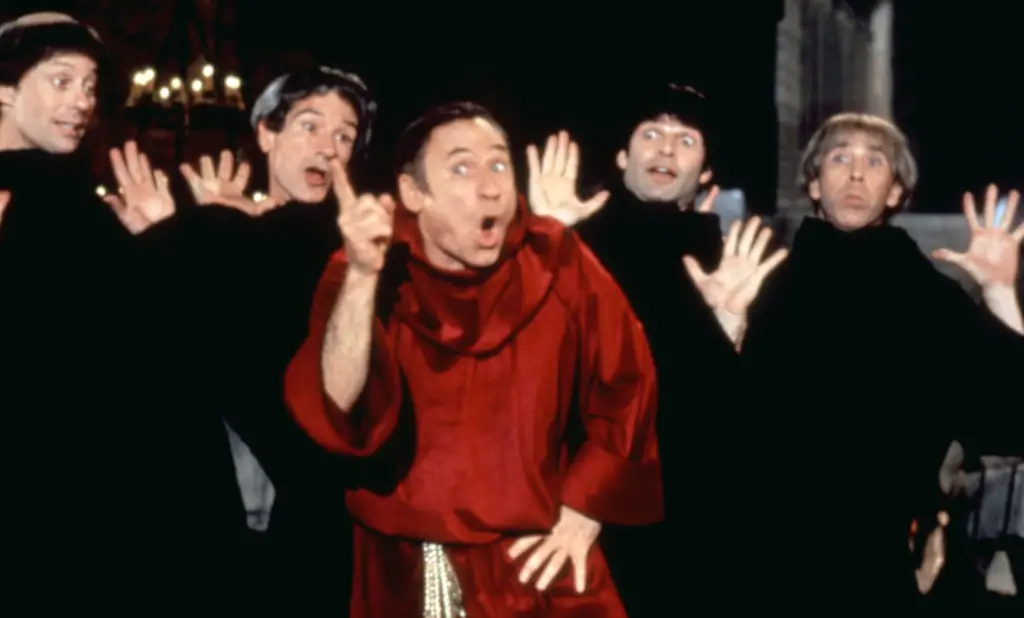
While not a single character but rather Brooks leading an ensemble, the Spanish Inquisition musical number in “History of the World, Part I” transformed one of history’s darkest periods into a splashy Busby Berkeley-style production number. Dressed as an inquisitor, Brooks delivers the memorable lyric “The Inquisition, what a show!” while elaborate torture becomes synchronized swimming and diving. This audacious sequence demonstrates Brooks’s fearlessness in finding humor in even the most sensitive historical events.
What makes this sequence stand the test of time is its perfect execution of Brooks’s comedic philosophy: the best way to diminish evil is to make it ridiculous. By turning history’s villains into song-and-dance men, Brooks strips them of their power to intimidate. The catchy tune (“Auto da fe? What’s an auto da fe? It’s what you oughtn’t to do but you do anyway!”) makes the sophisticated point that religious persecution is absurd while delivering genuine entertainment. This balance of historical commentary and pure silliness defines Brooks’s unique approach to comedy that continues to influence filmmakers like Taika Waititi, who employ similar techniques to mock historical atrocities.
11. Mel Brooks as Frederick Bronski (To Be or Not to Be, 1983)
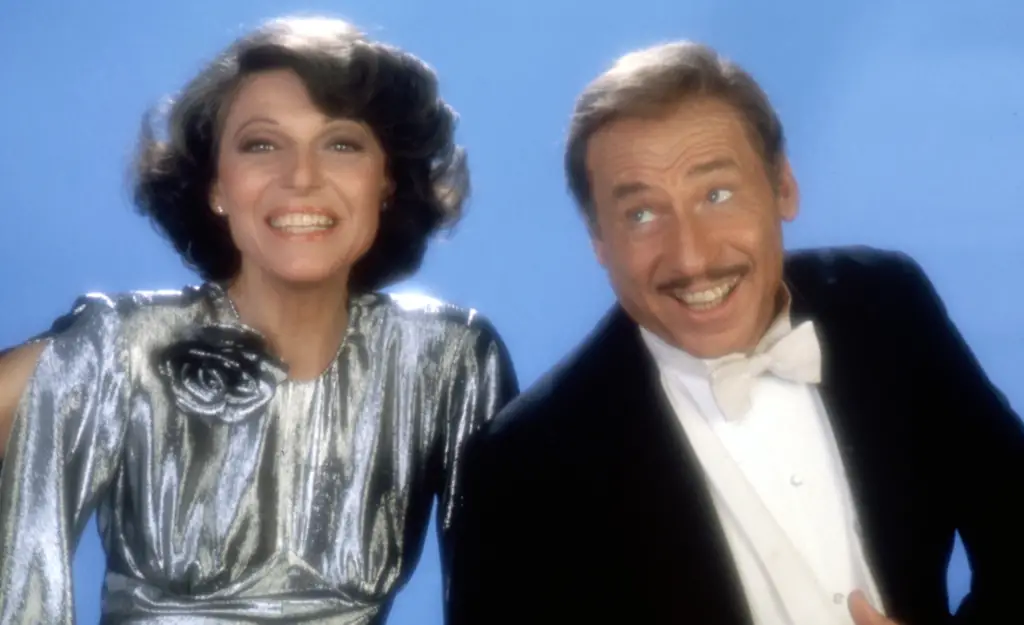
In the 1983 remake of Ernst Lubitsch’s To Be or Not to Be, Mel Brooks plays Frederick Bronski, a preening, ambitious Polish stage actor desperate to be taken seriously—especially when it comes to playing Hamlet. But when the Nazis invade Warsaw, Bronski’s flair for the dramatic gets redirected toward something far more dangerous: impersonating high-ranking Nazi officers, including Hitler himself, as part of a resistance plot. Brooks, a Jewish American and World War II veteran, turns Bronski’s over-the-top theatrics into a pointed act of defiance, blending farce with rebellion in a way only he could pull off.
What makes Bronski such a lasting and layered character is the way he embodies comedy as a tool of survival and resistance. He’s self-absorbed and ridiculous, yet willing to risk everything to help his fellow actors and Jewish neighbors. Through Bronski, Brooks doesn’t just mock the Nazis—he weaponizes laughter against them. It’s a role that allows him to use his signature silliness in the service of something deeply serious, showing how comedy can puncture the pomp of tyrants and reclaim power in even the darkest of times.
From corrupt politicians to spacefaring yogurt masters, Mel Brooks’s gallery of comic characters continues to entertain audiences across generations, proving that great comedy can be timeless even when built around specific cultural references. What makes these characters endure isn’t just their hilarity but their fundamental truth—Brooks always grounds even his most outlandish creations in recognizable human foibles and social observations. His willingness to be fearlessly silly while making sharp points about history, politics, and human nature created a comedic legacy that newer generations of performers continue to draw from. As comedy trends come and go, Brooks’s greatest characters remain fresh because they remind us that whether in Ancient Rome or outer space, human absurdity remains remarkably consistent—and consistently funny.


